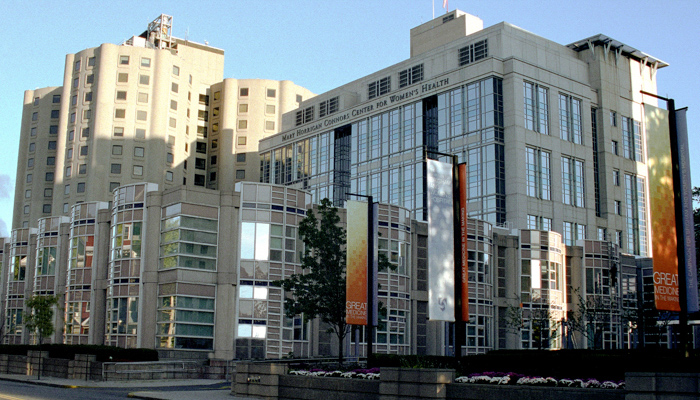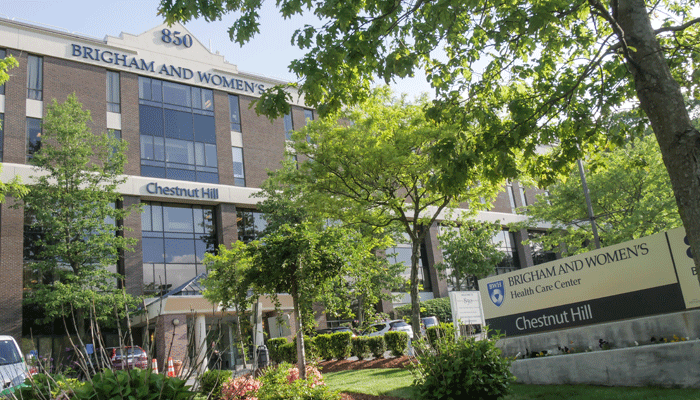At Brigham and Women's Hospital, we are committed to helping you recover from breast cancer surgery as quickly and safely as possible. As your care team, we follow evidence-based guidelines to optimize your recovery while minimizing pain and complications.
Recovery time after you leave the hospital varies from patient to patient and on the type of surgery you have, but it may take two weeks or more for a mastectomy. You may feel tired immediately post-surgery, and you may also have some pain. Talk with your doctor about your options for pain relief. You may be advised to avoid strenuous activity and heavy lifting for the first month after your surgery. Those who work in person may take three to four weeks off of work after a mastectomy procedure.
From pain management to managing discomfort, learn more about post surgical care:
The pathway for each surgical procedure has many steps that involve all members of your care team—including you. Some of our pathways build on an approach called Enhanced Recovery After Surgery (ERAS). These are evidence-based guidelines designed to optimize hydration, nutrition and pain control, leading to a faster, safer and more comfortable recovery from surgery.
We also go beyond ERAS to make sure that you are benefitting from the best-known practices throughout your entire surgical journey – including after you leave the hospital. Our pathways decrease complications, including surgical site infections, heart rhythm problems, blood clots and more. Patients and caregivers alike are seeing the benefits of this team-based approach that revolves around you and your recovery.
Learn more about Enhanced Recovery After Surgery (ERAS).
After surgery, you will go to a PACU (recovery room) where you will receive comprehensive care from an experienced clinical staff that will closely monitor you as you recover from anesthesia. The length of time spent in the PACU depends on the type of surgery performed and your specific condition. The clinical staff may do the following:
Our clinical staff will instruct you in performing breathing and moving exercises to aid the speed of post-anesthesia recovery, such as:
Many factors contribute toward the amount of discomfort following surgery. Typical discomforts following breast surgery may include:
Your healthcare team will work with you to minimize any discomfort you may have following surgery.
Although rare, complications can occur following breast surgery. The most common complications after breast surgery are:
A certain amount of pain is typical following surgery. With today’s new and improved pain medications, there is no reason for anyone to tolerate severe pain. If pain does not subside with pain medication, however, there may be a more serious problem.
By effectively treating pain, you will heal faster and be able to go home and resume normal activities sooner. Discuss pain control options that have worked well or not worked for you in the past with your doctor before surgery. Following surgery, your doctors and nurses will want to know how your pain medicine is working and whether or not you are still experiencing pain. If necessary, your doctor will change the medicine and/or dosage.
The amount of postoperative discomfort you experience depends on various factors, particularly the type of surgical procedure and your threshold for pain. Discuss your pain management options with your doctor, including the various types of pain medications and their side effects.
What are the different types of pain relief medications commonly used after surgery?
Some pain relief medications used after surgery may include:
Breathing and relaxation exercises can also help in controlling pain. Consult your doctor for more information.
Learn more about pain management in our health library.
Typically, your incision will be closed either by surgical glue (Dermabond) or Steri-Strips. To clean your incision, you can gently wash the area and pat dry. You should leave Steri-Strips or Dermabond on until they wear off on their own. Occasionally non-absorbable sutures are used, and in these cases your physician will explain how you should care for your incision prior to surgery.
Your nurse will review how to care for your drains after you leave the hospital.
The Brigham and Women's Hospital breast cancer surgeons offer the following patient information sheets:
Read more in our health library:
Visit the Kessler Health Education Libraryin the Bretholtz Center for Patients and Families to access computers and knowledgeable staff.
Even though you will soon want to return to your daily activities following breast surgery, there are precautions you should follow depending on your specific situation and the type of surgery that you have had. Before you are discharged from the hospital, your care team will teach you how to care for yourself once you are at home. We encourage you to ask questions and discuss any and all concerns with our staff.
Once you are home, it is best to pace yourself as you return to a daily routine. Even though you may have been told that you can resume normal activities, it is normal to feel tired after surgery and not up to your previous level of activities. You know yourself best and should do what feels comfortable to you.
Be sure to ask for help from family and friends. By taking the time to care for yourself, you will recover much more quickly.
Rehabilitation specialists at Brigham and Women’s Hospital (BWH) provide physical therapy and occupational therapy for breast cancer patients to alleviate the physical impact of surgery and medical management. Our therapists work closely with surgeons, medical oncologists and radiation oncologists to provide physical therapy services to patients throughout the continuum of care for breast cancer.
Depending upon your needs, care may be provided by a single therapist or a team of physicians and rehabilitation professionals who will develop a treatment plan tailored to your abilities and goals. Our objective is to help you regain your skills so you can live a full and independent life.

Physical and Occupational Therapy Ambulatory Service
Main Campus Location
70 Francis Street, 1st Floor
Carl J. and Ruth Shapiro Cardiovascular Center
Boston, MA 02115
(617) 732-5304

Mass General Brigham Healthcare Center (Chestnut Hill)
850 Boylston Street
Chestnut Hill, MA
(617) 732-9525
For over a century, a leader in patient care, medical education and research, with expertise in virtually every specialty of medicine and surgery.
About BWH